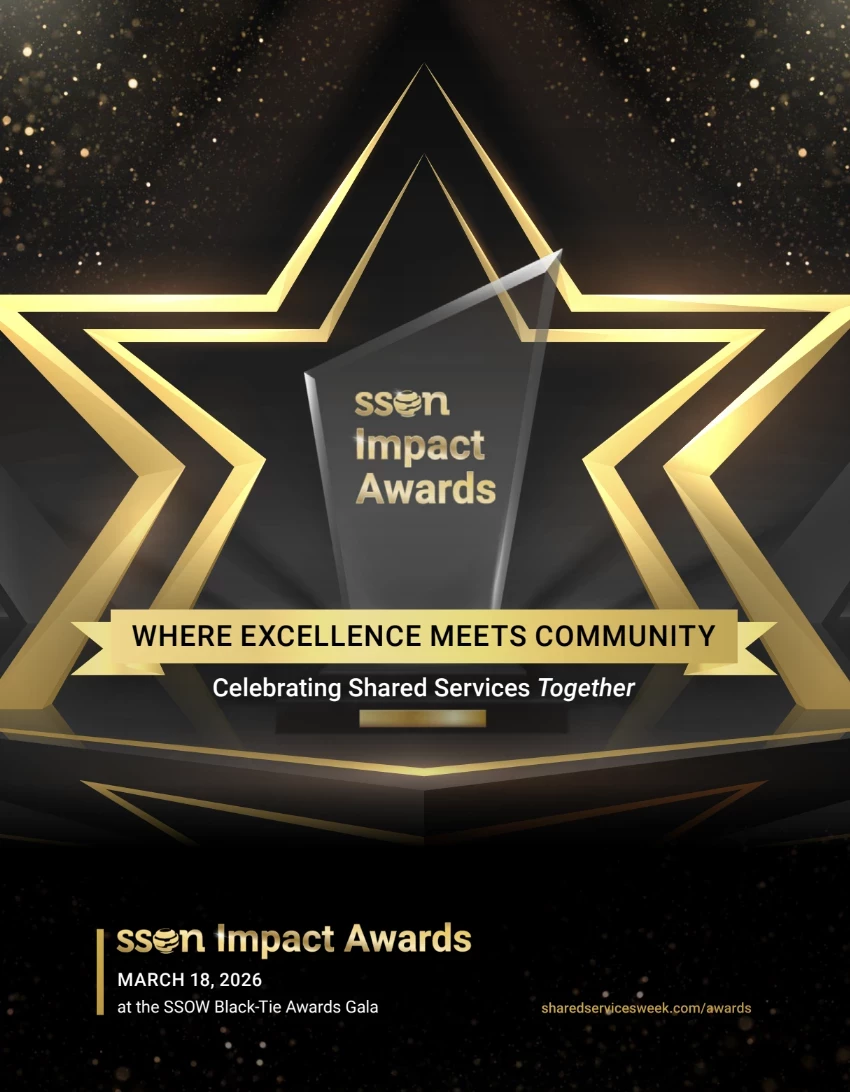10 Design Principles to Follow For Your Global Business Services Initiative...
Rethinking – or Merely Tweaking – Your GBS Target Operating Model? Read on…
Add bookmark
Too many Global Business Services (GBS) Target Operating Models (TOM) are nothing more than paper exercises, incorporating the received wisdom of consultants and others that the model must include elements such “two or more outsourcing relationships,” “truly global,” “one leader at the C-suite level”, and other similar nonsense.
Or, the TOM is merely a tweak of last year’s model, perhaps a new chevron here or a to-be-hired box there. And to add insult to injury, it’s a one off – or once in two years – exercise conducted in a vacuum by the boss and some head of Strategic Planning, distilled on a slide and blindly implemented.
But that’s where most GBS organizations go wrong. TOM design and implementation is a continuous process, not a PowerPoint.
READ ALSO: Can you define GBS?
When it comes to business services platforms, it’s fair to revert to the old saw that every organization is unique. There is no finite set of common denominators in a GBS operation, but a myriad of ways to leverage infrastructure, technology, leadership and expertise – to the extent the organization permits – to achieve a common set of goals: a more efficient and adaptable platform upon which to manage, increase productivity of, and better control the functions that support all or most of the business.
Models that incorporate the common wisdom with such imperatives that include “two or more outsourcing relationships,” “one leader at the C-suite level,” or “a singular governance platform” shouldn’t be ticks in the box. There’s no one-size-fits-all operating model. No common “must haves.” No end-state.
Taking a pragmatic approach, I’d suggest that a GBS operating model is no more than a dynamic framework to achieve the goals you set forth today with an eye on what you want to do tomorrow, and deploying a range of tools around scope, function, technology, capability, location … indeed, whatever the organization has at hand to make it more agile and cost effective. There are no absolutes, but rather a series of design principles that, if followed, give target operating models at least a fighting chance of success as a corporate game changer.
Since we’re all enthralled with the concept of design thinking (more on that another time), I’ve laid out a few design principles that every GBS leader wanting to make a mark should embrace.
10 Design Principles to Follow For Your Global Business Services Initiative...
Design principle 1: Have a reason for being
Changing the operating model is always an all-consuming exercise. Making change merely because some peer GBS did so, or for political reasons – the boss hinted that s/he wants to see change – is insufficient justification for such an endeavor. Yet many GBS organizations believe that it’s a good idea to shake up the model occasionally to remind the enterprise that GBS exists. It’s a dickens of a way to remind the organization that there’s a so-called empire called GBS! Justify a model change by ensuring all imperatives are linked to tangible business—not GBS—results, and weigh each strategy or option against its achievement.
Design principle 2: DIY
Your enterprise must live with a TOM so fully outsourcing its development to a team of consultants works against success. Those who are expected to benefit from it must have skin in the game. After all, no consultant alive is going to understand the nuances of the power structure, organizational taboos or pace at which the organization can adapt. And don’t underestimate the capability of the internal team to surface and articulate pain points and opportunities. Do your homework. Talk to peers and even consultants to get use cases. Harness the wisdom of a coach or guide, and get some help with deliverables, but don’t let a third party pull out a PowerPoint with another company’s framework.
Design principle 3: Understand there’s no end and no beginning
TOM design is a process that never stops, sort of alpha and omega, with a destination that’s never an end state. Now that may sound like defeatism right out of the box. But if a GBS TOM is truly agile, it must able to bob and weave, quickly adjusting to changes in the business, economy, talent, and technology. A good target operating model is a framework with defined design processes that not only respond to current business challenges but are sufficiently agile to respond to the creation of new businesses, take out more cost, or create new kinds of value. Ensure that entire GBS team and its major stakeholders are always standing ready to evaluate and adapt.
Design principle 4: Make sure digital is on the table
Too many TOM exercises focus primarily on organization, scope and performance decisions and relegate digital and, by extension, customer experience, to the sidelines, thinking of it as an enabler as opposed to a vital component of the model. And the dirty little secret is that that’s fundamentally where most automation and artificial intelligence efforts go wrong. The way we apply digital today is as a tool layered on top of process and organization, aiming to make existing functions/processes the best or the most cost-effective they can be – as opposed to a fundamental transformation. But we don’t take the time to change the game using all levers. Develop the TOM holistically. Incorporate digital as part of an operating model, not an afterthought.
Design principle 5: Don’t try to put a square peg in a round hole
It seems self-evident but many GBS organizations fail when they design a TOM that’s not aligned with how the business is organized, led and rewarded. Or when the business context just doesn’t support the model from the perspective of investment, change or focus. That’s likely to happen when well-meaning GBS leadership become crusaders, convinced that GBS can magically transform the enterprise as opposed to improving the way it works – a sure recipe for organizational tissue rejection. Ensure that the TOM does not get out in front of the enterprise by calibrating the change to enterprise reality. The markers are all there; look for them.
Design principle 6: Convince the top man or women that his/her role is to be the number one fan
If the chief executive won’t sign off and endorse the model as a framework for change and confirm what business challenges it fixes from the get-go, the TOM is doomed to be another paper exercise creating a lot of ill will. Without his/her visible sponsorship, coupled with a full understanding of the design process, stronger voices than that of GBS leadership will likely prevail, derailing any attempt to challenge the status quo. Involve the boss from the beginning and make him/her sign off not only on what the TOM must fix, but the measurements that underwrite the change.
Design principle 7: Constantly challenge beliefs head-on
In the rush to design a model, GBS leaders forget that organizational cultures are made up of a series of beliefs or perceptions that translate into behaviors and biases. In order to move to a new operating model, each belief must be carefully debunked with incontrovertible fact wherever possible. But that’s not enough. Understanding how the perceptions have come to be formed, and who holds them to what degree, is just as important. Understand the source, depth and rationale of resistance by going to the core set of beliefs, and challenge those you can with facts. Embrace those that enable, and actively acknowledge. And then confront the derailers.
Design principle 8: Include everyone who will contribute, and those who oppose
TOM design and implementation requires a big tent approach to succeed. Business owners, customers, allied functional groups, CXOs … all need to put their fingerprints on the model in some form or fashion to give it a fighting chance of adoption. And that takes time, energy and opens the process to debate and frustration. Often, time is spent diving down rabbit holes that lead nowhere. Don’t be an empire builder but think about your model as driving an ecosystem of transformation. Be gracious, generous and inclusive throughout the process. Not doing so costs a lot.
Design principle 9: Agree the business case up front
Believe it or not, the majority of GBS are skint when it comes to the development of measurements – critical success factors, performance metrics, and benefits quantification. Or the business case is developed separately by another team as part of the investment case. The two are intertwined and interdependent. Make sure that the model comprehensively answers, at a minimum, the following questions: Does it avoid cost (and how much)? Does it eliminate cost (and how much)? How fast can we get ROI? Can we quantify intangible or indirect value? Does it change the game and how? Is it worth the disruption?
Design principle 10: Take people out of the process
It’s human nature to design an organization based on the capabilities of, and trust placed in, the existing team. After all, structures and teams are inextricably linked. But evolution is capped when models are supposedly “transformed” by moving the org boxes cum deck chairs around, and the exercise turns into a corporate survive-the-change exercise. Approach staffing by first developing an organigram – rather than an org chart – during model design. Figure out what capabilities your need but do so blindly, not with a team member in mind. Only after the model is developed and the business case signed off and ready to go should names go into the boxes.
Conclusion
Target operating model design is hard, messy and constantly all-consuming if it is to reflect how the enterprise can benefit from a GBS model.
So, put on your wellies and wade in.
Note: Deborah Kops is part of SSON's Global Advisory Board, guiding our content and making connections!



































